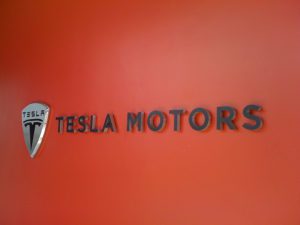The use of aluminum is becoming much more common in all types of passenger vehicles, generally to minimize weight as well as reduce tailpipe emissions. In electric cars, engineers take advantage of the high strength-to-weight ratio of aluminum that enable the car to go further on each charge. Recent press releases by Audi, BMW, General Motors and Ford discussing their plans to develop and manufacture electric vehicles, suggests that they believe the fully electric car is the inevitable future of their industry. In addition to the traditional car manufacturers, a number of start-up companies are developing electric cars in Europe, Asia, and the United States. Arguably the company who has led the way in the commercialization of electric cars is Tesla.
We make a number of precision extrusions that are machined and act as weight-saving components in the Tesla Model S and the Model X. Our first project for Tesla was a family of components for the wire harness management system. The original
aluminum extrusion supplier was unable to hold the dimensional tolerances the parts required. An internet search for the a potential new supplier landed them on our website. Once we understood their specific needs, we were able to hold the profile tolerance to .0235”, meet all other dimensional requirements, and significantly improve the packaging. This led to lower  overall costs for the machined component and increased on-time delivery of the parts to Tesla. Since 2014 we have made hundreds of thousands of pieces without a single rejection.
overall costs for the machined component and increased on-time delivery of the parts to Tesla. Since 2014 we have made hundreds of thousands of pieces without a single rejection.
With the success of the wire harness project, Tesla recommended other suppliers contact us to see if we could help solve any problems they were having. In one particular case, extruded aluminum shapes were being delivered with too much twist. This condition did not allow for the precise machining that was required. We spent some time asking questions to fully understand what was needed to successfully machine the extrusion. In the end, we agreed to supply parts with 50% less twist, and 20% greater straightness. Our qualification parts were accepted on the first submission. We have been running the extrusions since 2015 without a rejection.
In both of the above examples we worked closely with our customer to understand what they required to successfully manufacture good components. The cost for our extrusions was more than they had been paying, however, their total cost to manufacture the components went down due to machining productivity increase and scrap rate decrease. In addition, on-time delivery to the production line improved significantly. If you have similar challenges with the commercial aluminum extrusions you purchase, please contact us. We’ll be happy to work on a precision aluminum extrusion solution for you.
Image by Sam Felder via Flickr CC


